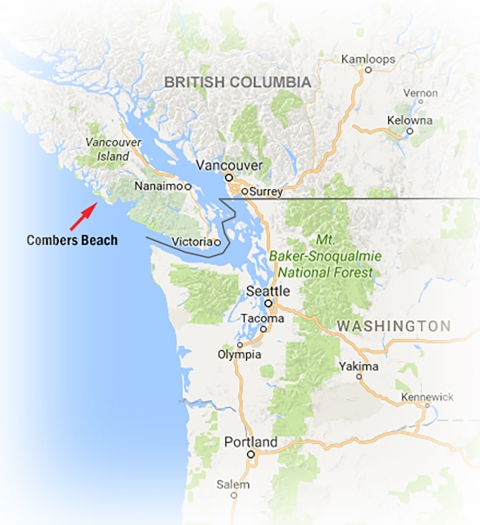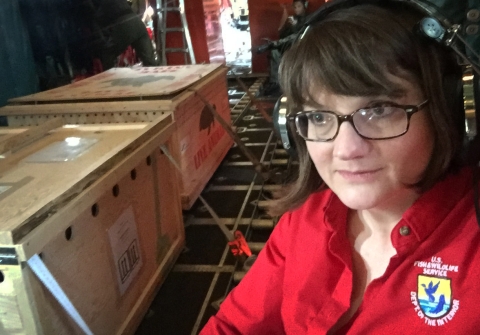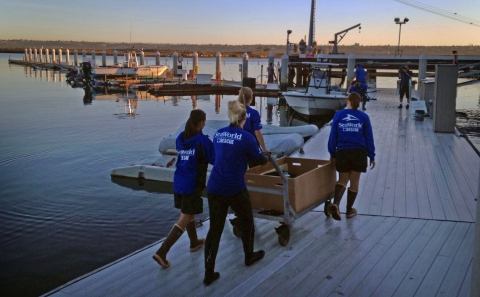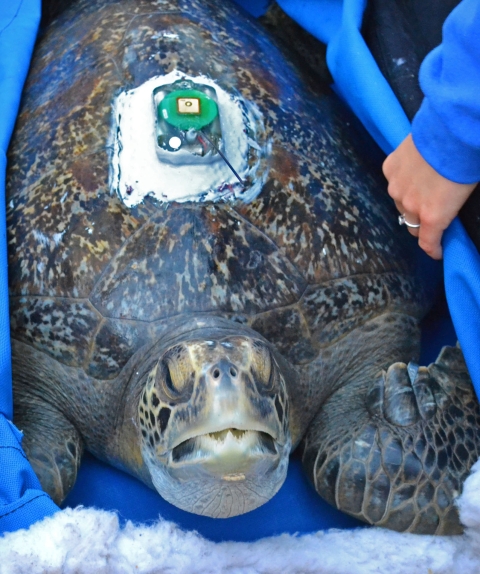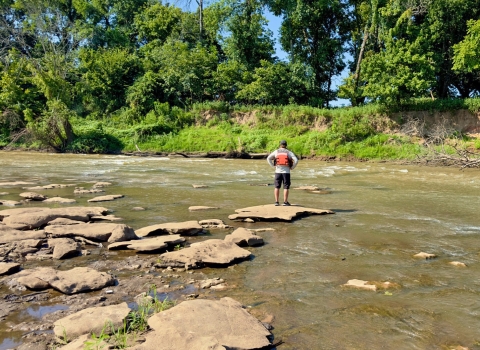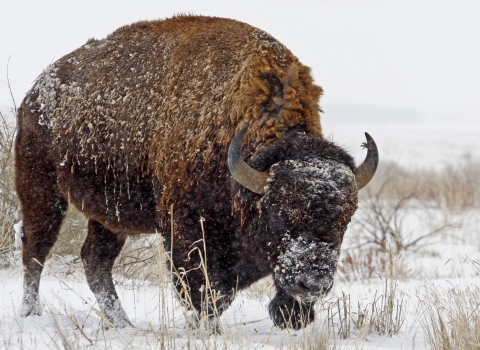In the midst of winter, a green sea turtle suffering from severe hypothermia washed ashore at Combers Beach, located in Canada’s Pacific Rim National Park.
Parks Canada staff discovered the ailing and nearly lifeless turtle, and quickly transported him to the nearest marine mammal rescue facility.
“Comber,” named for the beach of its rescue, is the only sea turtle found stranded as far north as Canada, to undergo rehabilitation and survive. While Canada is an unexpected place for a sea turtle to land, the closest rescue facility, the Vancouver Aquarium, had the capacity and expertise to provide Comber a perfect place to recover.
Across the globe, green sea turtles live and thrive in ocean waters where temperatures are at least 68 degrees, so when they land in the Pacific Northwest or Canada, it's due to injury or illness. Sea turtle strandings are becoming more common along the Pacific coast, and once stranded on land, there is little hope of survival without prompt medical attention.
In the winter of 2015 - 2016, 10 sea turtles became stranded on beaches in Oregon, Washington and British Columbia - only 3 survived.
As more sea turtles strand themselves on the Pacific seaboard, Laura Todd, of the U.S. Fish and Wildlife Service, has informally become the Service’s west coast sea turtle coordinator. She has a soft spot for these reptiles and believes the time is ripe for a more tightly coordinated sea turtle rescue network along the West Coast.
“The East Coast has seen sea turtle strandings for years. As a result, they have a highly coordinated marine mammal network, whereas, on the West Coast this is a more recent phenomenon, so our capacity for rescued marine animals is not yet equivalent,” said Todd.
No matter where they live, green sea turtle numbers are dwindling and they face mounting obstacles as ocean conditions change. They and their habitat are increasingly threatened by heavily trafficked seaways, commercial fishing, beach tourism and illegal poaching.
Because they spend time on land and in water, responsibility for their protection is complex, especially when you add in the international component: Green sea turtles were listed under the Endangered Species Act (ESA) in 1978; the National Marine Fisheries Service is responsible for protecting them in the ocean, while the U.S. Fish and Wildlife Service protects them on land.
“Sea turtles need a little extra help from us, especially impaired sea turtles. They face many threats and they’re at the whim of their environments,” she said.
Sea turtles are highly migratory; most of those that live along California’s coast during the summer, head to breeding grounds in Mexico in winter, which makes tracking them difficult. However, this typical migratory behavior does not explain how a sea turtle could end up in Canada. It is extremely rare.
Making Comber’s story even more extraordinary, recent DNA tests revealed that Comber is from the Galapagos Islands; more than 4,000 miles from his point of rescue in Canada and atypical of the green sea turtles seen along California’s coast.
So how did Comber end up in Canada? Some theories point to climate change climate change
Climate change includes both global warming driven by human-induced emissions of greenhouse gases and the resulting large-scale shifts in weather patterns. Though there have been previous periods of climatic change, since the mid-20th century humans have had an unprecedented impact on Earth's climate system and caused change on a global scale.
Learn more about climate change and the erratic and unpredictable ocean temperature conditions it creates. Unexpectedly warm water temperatures can lure sea turtles like Comber out of their normal range causing them to ride north-moving currents, leading to unsuitably cold waters, and ultimately, strandings.
LUCKIEST, UNLUCKY SEA TURTLE
Comber’s uncertain and delicate condition eventually stabilized at the Vancouver Aquarium. The next step in his care was continued rehabilitation in the U.S. where, pending full recovery, Comber could return to his ocean home.
Because Comber is considered a threatened species under the ESA, the aquarium needed a permit to transport him across the international border so he could continue his rehabilitation. High-quality care was the number one priority for Comber, so the Service worked quickly to fast-track the aquarium’s permit and expedite his transition to the U.S.
Comber hitched a ride to the Seattle Aquarium for overnight care, then departed the next morning for San Diego, transported courtesy of the U.S. Coast Guard conducting a routine training flight. He spent the remainder of his recovery at SeaWorld San Diego and had daily check-ups to evaluate his appetite, buoyancy, weight and stamina, to determine if he was capable of returning to the wild.
On October 20, 2016, exactly nine months after his rescue, Comber was released into the open ocean off the coast of San Diego, California.
Todd believes Comber’s inspiring story can inform future rescues along the Pacific coast, “very little is known about the movement of adult male sea turtles since they do not return to nesting areas.
Prior to his release to the wild, Comber was outfitted with a satellite transmitter. In exchange for his months of care, we now have a window into his ocean world.”
You can follow Comber’s journey at sea here.
With the rising number of sea turtle strandings along the Pacific seaboard, there are too few facilities available right now to handle these animals. Having more permitted facilities capable of treating and rehabilitating threatened sea turtles and other marine mammals is essential.
Todd emphasized teamwork as a critical part of the rescue recipe.
“To remedy this capacity issue, we are working with dedicated partners along the West Coast to increase our ability to care for sick sea turtles and marine mammals," she said. "If we have more experienced responders acting quickly, we may see more animals survive strandings."
If you spot a stranded sea turtle along the beach, call your local marine mammal stranding network as soon as possible. You can find your local network here.
"Believe it or not, each sea turtle has a distinct personality. They’re very curious animals and are pretty cool to watch. People deserve to encounter these amazing creatures for generations to come,” she added.



